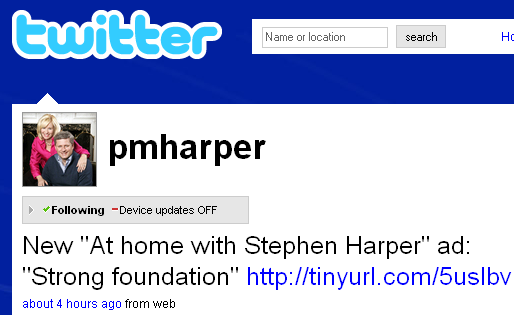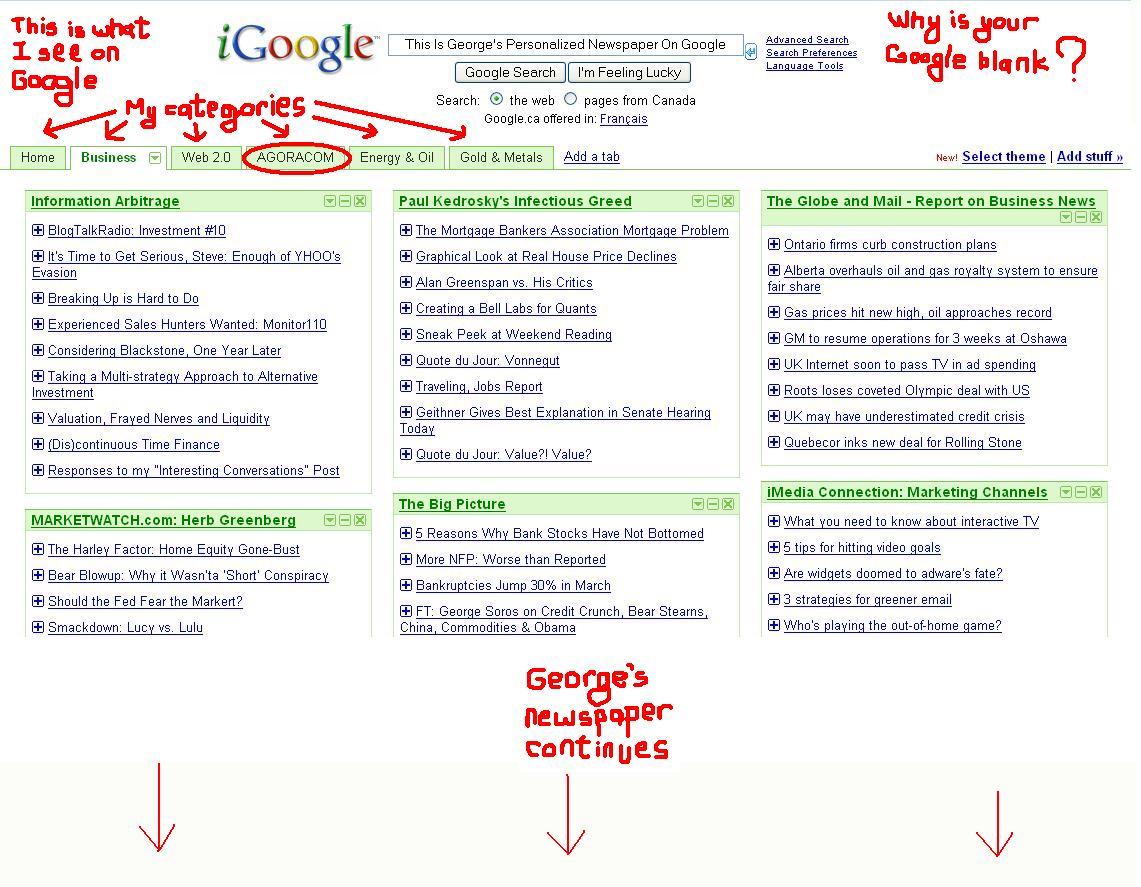
Good evening to you all. As most of you know, AGORACOM was once again a proud sponsor of the PDAC International Convention. This is the world’s biggest mining and exploration conference, with over 18,000 delegates from all over the world.
In addition to the PDAC’s greatest hospitality suite event ever (see: Invitation + Video + Photos) , we also found time to conduct great business. One thing we did was once again survey attendees over the entire 4 days in order to better understand their online research habits and favourite metals/minerals. (View 2007 Survey Results Here).
With more than 650 investors surveyed, we were once again able to extract some very valuable information. The results will have different implications for each of you depending on your core commodity and whether or not you have an online IR strategy.
As expected, I’ve added my own commentary following each of the questions but welcome your feedback via posting your comments at the end of the post.
Without further adieu, here are the results:
QUESTION #1 – Which Metal/Mineral Are You Most Bullish On?
- Gold (54%)
- Silver (12.5%)
- Nickel (8.8%)
- Uranium (7.7%)
- Diamonds (6.6%)
- Copper (5.8%)
- Molybdenum (4.6%)
QUESTION #2 – Do You Prefer Small or Large-Cap Resource Companies?
- Small-Cap (79%)
- Large-Cap (21%)
Big change here. Last year, it was ~ 88 / 12. Either investors are looking up the ladder, or more large-cap people are coming by the AGORACOM booth to find small-cap investments.
QUESTION #3 – What Percentage Of Your Research Into New Stocks Is Done Online?
- 100% of Research – (17.6%)
- 90% of Research – (23.4%)
- 75% of Research – (21.7%)
- 50% of Research – (19.6%)
- < 50% of Research – (17%)
After a little further tabulation, we can conclude that the web accounts for 69% of all research into all new investments. Still think online investor relations and marketing isn’t important? If you want to take a look at more supporting data that I’ve reported on, please review the following headlines.
QUESTION #4 – Would You Like To Participate In Private Placements Of TSX-V Resource Companies?
Retail investors obviously have an appetite for participating in private placements. AGORACOM is now taking this a step further by building a database via our very own private placement opportunities initiative. If you would like access to our database for a future financing, please let us know.
QUESTION #5 – Do You Use Discussion Forums For Information and/or Research?
Two comments here:
First, small-cap CEO’s and IRO’s need to pay close attention to this number. Though most of you ignore them by saying “I don’t read forums”, the fact of the matter is that 55% of your current and prospective investors use them for information and research. Thus, either you take control of your message, or somebody else will.
Second – and more importantly – 80% of investors that don’t currently use discussion forums would use them if quality control measures were implemented. As such, the true percentage of investors that participate or want to use discussion forums is actually closer to 90%.
Conclusion – If 90% of your current or prospective investors want a community that they can use for information, collaboration and research – give it to them! Just look at how it has helped Noront Resources communicate with their investor base.
Question #6 – If You Have Used Stockhouse, Do You Click On Their Ads?
- Never – 53.8%
- Rarely – 26.1%
- Sometimes – 16.7%
- Often – 3.4%
Assume we are extremely conflicted here, so I won’t provide any commentary on these figures. If you are a Stockhouse advertiser, you probably want to pay close attention to them.
CONCLUSION
The importance of the web in achieving your IR goals simply can’t be overstated. If you think a website alone is sufficient, you are wrong and need to read this report in order to avoid wasting more valuable time.
Investors are using the web to research and discuss their current or prospective investments. They are dissecting your fundamentals, collaborating about your future, watching videos, sharing photos and making decisions about whether to buy, sell or hold your stock.
You have an incredible, cost-efficient opportunity to be a part of that process and significantly impact the future of your company for years to come. Feed your audience with the best information possible, ask them questions, listen to their feedback and create a connection with an ever increasing number of investors that will pay you perpetual dividends.
If you are not a significant part of that ecosystem, you are doing your company a great disservice and will inevitably be left behind the unstoppable growth and habits of online investors.
Regards,
George
 recent Cone Business In Social Media Study, which found the following:
recent Cone Business In Social Media Study, which found the following:






 Good evening to you all and sorry for being away from the blog for a while. I’m back in full force now and wanted to start off light with my new favourite acronym to describe the ridiculous criteria used by mortgage lenders, which ultimately contributed to the sub-prime mortgage mess:
Good evening to you all and sorry for being away from the blog for a while. I’m back in full force now and wanted to start off light with my new favourite acronym to describe the ridiculous criteria used by mortgage lenders, which ultimately contributed to the sub-prime mortgage mess:












